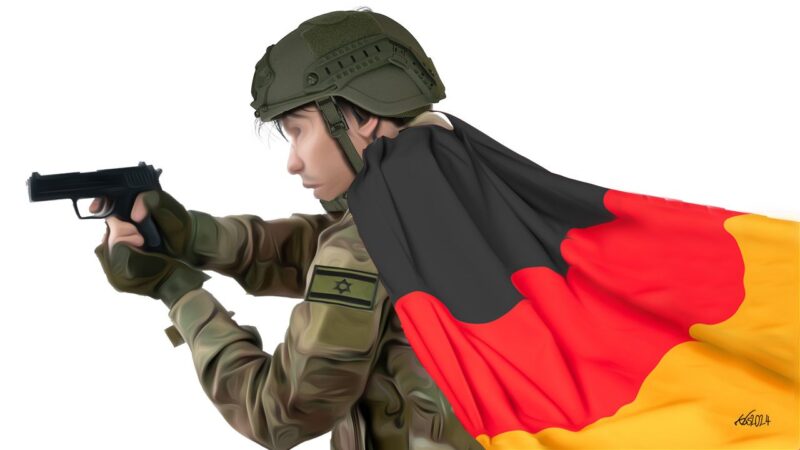Reports by various institutions including Parliament, the Ombudsman and NGOs have established that the Kenyan government’s failure to develop a comprehensive policy and legal framework continues to put at risk thousands of Kenyan migrant workers in the Middle East and especially in the Gulf.
There could be anywhere between 100,000 and 300,000 Kenyan migrants in the Gulf countries. No one knows for sure as the Kenyan government doesn’t keep accurate records, though its estimates are at the lower end of the spectrum. Most are unskilled laborers, in sectors such as construction, hospitality and domestic work, and their numbers are expected to keep growing given the Gulf’s high demand for inexpensive foreign labour. Labour abuses in the region are widespread, systemic and deadly. And while the government has developed policies enabling Kenyans to seek employment abroad, it has been much slower to act to protect them once they are there, seemingly more interested in the remittances they send home rather than in their safety.
Concerns over the safety of workers, and especially the safety of domestic workers, in the Gulf and the Middle East in general are not new. In 2014, following the deaths of Kenyan workers and accusation of widespread abuses, the Kenya government suspended the export of workers to the region, revoking the licenses of 930 recruitment agencies involved in the trade. The ban was only rescinded in 2017 following the signing of bilateral labour agreements with Qatar and Saudi Arabia. However, the issues that had precipitated the ban, and the government inaction that had preceded it soon resurfaced.
At least 93 Kenyans died while working in the Middle East between 2019 and 2021, many of them in Saudi Arabia, the third largest source of remittances with Kenyans in that nation sending back KSh22.65 billion in the first eight months of 2022 alone. A study by the University of Chicago released in December 2021, whose findings reflect the experiences of Kenyans who had returned from the Gulf, found that “practically everyone heading to [Gulf Cooperation Council member states, Saudi Arabia, Bahrain, Kuwait, Oman, Qatar, United Arab Emirates]… would become a victim of forced labour at some point”. Over 98 percent of respondents claimed to have experienced some form of workplace abuse, or had been unable to leave an abusive employment situation. The abuses included physical violence, threats, restrictions on movement and communications, being forced to do something they did not want to do, denial of food and shelter, unfair and unsafe work environments, and deceptive contracts.
Parliament and other constitutional bodies have noted the absence of laws and regulations to secure the welfare of Kenyan labour migrants, and even recommended as recently as November last year, that labour migration to the Gulf be temporarily stopped until these are addressed. However, much of the focus has been on streamlining the system for recruitment and processing of migrants heading to the Gulf, rather than on fixing the conditions they face when they get there. For example, whilst the report of the Senate Standing Committee on Labour and Social Welfare, which visited the Middle East in April 2021, noted Kenya’s lack of a policy and a law to govern the migration process, its main thrust appears to be about reforms Kenya can make to make it easier for migrants to secure jobs. In its account of meetings with Saudi labour officials and employment agents, there is no mention of the deaths of Kenyans nor of the tribulations of those desperate to leave the Kingdom.
Still the committee recommended the immediate suspension of migration of domestic workers to Saudi Arabia until the Executive established the status of all domestic workers in Saudi Arabia and undertook a census of all Kenyans in Saudi prisons and detention centres with a view to their repatriation to Kenya. It also demanded the re-establishment of labour offices and safe houses in Jeddah and Riyadh, recognition of welfare associations in Saudi Arabia, and a review of the regulation of private employment agencies, including a minimum deposit to ensure swift repatriation of any domestic worker in distress.
Here there seems an implicit acceptance that Kenyans going to Saudi Arabia and elsewhere in the Gulf will be subjected to abuse and, rather than demand action from the governments in the region to stop it, the focus seems to be on mitigation. The aim seems to be enabling Kenyans navigate an abusive system rather than pressuring the Gulf states to end the abuses. Thus the report pushes for finalization of a labour migration policy and a Labour Migration Management Bill mooted in 2021, and notes that “labour migration to key labour destinations has been happening in the absence of formal agreement or MoUs. And where they exist, the agreements fall short of taking care of the interests of workers”. It stresses need to better regulate recruitment processes and recruitment agencies in Kenya, and to streamline pre-departure training for migrating workers as well as systems for their identification and registration on arrival. It also recommends improved linkages between relevant ministries in Kenya and those in destination countries. A September 2022 Report on Systemic Investigation into the Plight of Kenyan Migrant Domestic Workers in the Kingdom of Saudi Arabia, the Commission on Administrative Justice (the Ombudsman) came to similar conclusions.
The Kenya and Saudi Arabia Bilateral Labour Agreement on the recruitment of domestic workers was adopted in January 2016 and was meant to secure the interests of both domestic workers and employers. While Kenya was tasked with ensuring proper documentation and screening of departing workers, Saudi Arabia was to take measures to ensure that the welfare and rights of employers and domestic workers employed in Saudi Arabia are promoted and protected in accordance with the applicable laws, rules and regulations.
The Saudi government was also to ensure implementation of the employment contract, provide 24-hour assistance to the domestic worker; endeavour to facilitate the expeditious settlement of any contractual dispute arising and ensure that workers are permitted to remit savings derived from their wages.
However, going by the number of abuses and deaths, Kenyan domestic workers have not benefited from the agreement, despite the Ministries of Labour of both countries being designated as the implementing agencies.
In its analysis of the level of implementation of the Bilateral Labour Agreement, the Ombudsman found that the two governments have not implemented many of the provisions. For instance, nearly 7 years after the adoption of the Agreement, the Joint Technical Committee has yet to be constituted and as a result, the required annual meetings have not taken place. Moreover, although the Commissioner of Labour told the Ombudsman that a review had been initiated, it has not been completed as required by law.
Within government, ministries have been passing the buck and it is unclear who between the Foreign Affairs and Labour ministries bears overall responsibility for the mess. The Ministry of Foreign Affairs has told Parliament that it had in July 2021 written to the Ministry of Labour recommending a temporary ban on the recruitment and export of domestic workers to Saudi Arabia and describing the situation as “dire”. However, the Labour Ministry rejected the advisory, with then Cabinet Secretary Simon Chelugui saying the local job market could not absorb all new workers. Chelugui’s comments appeared to prioritise the remittances from the Middle East, which at the time stood at KSh120 billion, at the expense of Kenyans’ safety and welfare in the Gulf states. ‘
“We will address the mistreatment of our people because from the statistics we have, about three to four per cent of Kenyans working in those countries are affected. Over 104,000 Kenyans are working in those countries who are doing their jobs happily,” Chelugui said, adding that there are “many social-economic benefits we gather from this migration”.
On the other hand, the advisory from the Foreign Affairs Ministry is an admission of the failure to implement the Diaspora Policy launched in 2014 which recognizes the constitutional imperative for government to protect citizens abroad, and requires it to develop a registry of Kenyans outside the country as well as review the 2007 Labour Institutions Act and gazette rules regulating operations of private employment agencies.
And while the Commissioner of Labour claims to have begun be reviewing the bilateral labour agreements, the senate in November was scheduled to debate a motion demanding the Foreign Ministry conduct the review.
The new Cabinet Secretaries for Labour and Foreign Affairs have committed to ending the problem once and for all. Dr Alfred Mutua chose Saudi Arabia as his first overseas trip as Foreign Affairs Cabinet Secretary, but again suggested the problems facing Kenyan migrants start back home in Kenya. Following meetings with victims, agents, and Kenyan and Saudi officials, he blamed “massive corruption in the way Kenyans are prepared before they leave to be domestic workers in Saudi Arabia and follow up of Kenyans when they arrive”. According to him, the behaviour of Kenyan “cartels” and agencies was a major concern to everyone, “including the Government of Saudi Arabia”. There was no mention of the seeming lack of prosecutions of Saudi employers who have abused and murdered dozens of Kenyan workers, or compensation for their families. Instead he promised the yet-to-be-formed Joint Technical Committee would start its work on November 17 to fast-track “labour issues”.
The Ombudsman highlighted the creation of the Philippine Overseas Employment Administration by an amendment of the Migrant Workers and Overseas Filipinos Act of 1995 in a bid to improve the standard of protection and promotion of the welfare of migrant workers, their families and overseas Filipinos in distress. This is not to say that Filipinos do not face challenges in the Middle East; they do and in fact, in January 2018, former President Rodrigo Duterte threatened to ban labour migration to the Middle East.
However, the Filipino government has taken steps to engage directly with the governments in the Gulf region to protect its nationals. In May this year, Philippines Foreign Affairs Secretary Teodoro L. Locsin Jr lauded the labour reforms in Bahrain and Saudi Arabia that protect Filipinos and encouraged other countries to follow suit. According to Philippines News Agency, the country collaborated with Bahrain in 2018 to provide flexible pathways to migration, leading to the issuance of flexible visas that regularized more than a thousand undocumented Filipinos. The government also invested some US$1.5 million to purchase flexi-visas for over a thousand Filipino migrant workers.
The Sri Lankan government has, for its part, developed a framework for labour migration that is enshrined in the Sri Lanka Bureau of Foreign Employment Act, 1985. This was done through the creation of the Ministry of Foreign Employment Promotion and Welfare to articulate State Policy regarding Sri Lankan citizens employed in other countries.
However, any engagement with the Saudi and other Gulf governments must recognize that the abuse, rape and killing of Kenyan migrant workers is happening within their jurisdiction and largely with their acquiescence. Reforms to systems within Kenya that does nothing to address their failure to provide justice and redress, including domestic reforms to hold perpetrators to account, will not protect Kenyans travelling there. Especially given the desperation of Kenyans to secure jobs, and the legendary corruption of the state, it is likely that there will continue to be incentives for people to circumvent bans and sidestep regulations. Ultimately the problem is not in Kenya but in the Gulf where most of the abuse is allowed to take place within families and behind closed doors.
The impotence of the government was highlighted by former Labour CS Chelugui during his vetting to become Cooperatives minister: “It is an issue that has not satisfied us as a country. We’ve been told some of the victims were (. . .) in breach of the laws of that country, but we cannot confirm these explanations since I have no jurisdiction there,” he told the vetting committee after Deputy House Speaker Gladys Boss questioned why many migrant workers end up dead in Saudi Arabia. Appearing before the Labour Committee in November, his successor, Florence Bore, blamed “insufficient budget, lack of enabling legislation and inadequate labour personnel” for the failure to protect Kenyans working in the Middle East.
For his part, PS Kamau has termed Saudi traditions around housework “very ancient” and suggested that the problem was actually the Kenyan victims’ lack of subservience! The sentiment encapsulates the Kenya government’s reluctance to take on their Saudi counterparts. And Kenyans will continue to pay the price.
–
This article is part of a series on migration and displacement in and from Africa, co-produced by the Elephant and the Heinrich Boll Foundation’s African Migration Hub, which is housed at its new Horn of Africa Office in Nairobi.








